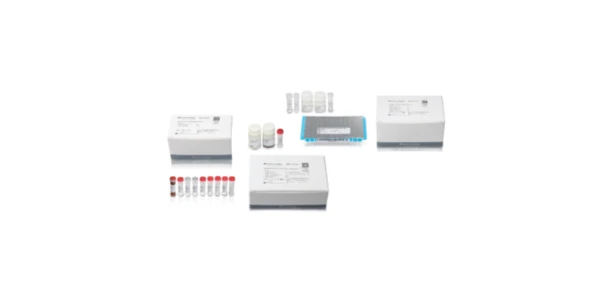How to Source Equipment and Outfit a Cannabis Testing Lab
Cannabis testing and insights on methods and sources for the appropriate testing equipment and consumables
It’s important to establish a sound basis for a cannabis testing operation and determine the scale and scope, and future prospects, for the lab.
What are the goals of the cannabis testing lab?
There are multiple points in the cannabis processing workflow that require testing to ensure quality, consistency, potency, and safety.
Accordingly, there are preferred instruments, equipment, and consumables that serve these intended testing needs. Depending on location and legal status, there are testing guidelines and thresholds that are required, and regulatory bodies in place to ensure compliance.
All of these considerations shape the goals of the lab – what will be tested, what equipment is required, where will the lab be located, and how will the lab comply with regulations.
The latter points are critical, as the legal status of many locations, and the regulatory requirements therein, are evolving to meet the growth of the industry. Universal federal regulations will help harmonize the cannabis processing field. Until then, states will continue to dictate the testing terms – and knowledge and compliance are paramount.
The future state of the industry is an important factor to consider as well, in sourcing equipment and outfitting a testing lab.
How will regulations change, how will consumer influences and production change, how will the lab grow and diversify to meet demand -- all important in planning into the future.
What is the desired product, the scale, and the budget of the cannabis testing lab?
What tests are needed to ensure the cannabis operation is yielding valuable product and regulations are being met? Just as each state has unique medical (and recreational) cannabis laws, regulations for testing also vary by state.
These conditions apply at the grower, processor, and retailer levels and can entail explicit test parameters, for instance reporting of pesticides levels in flower versus extract, or simply required thresholds -- pass or fail. State specific testing guides need to be consulted and reviewed on a continual basis to ensure compliance and proper reporting. Here are examples of current California lab testing requirements a testing fact sheet – as well as a summary of Licensed Laboratory Reporting and Testing Requirements. Here is a well annoted and updated list of medical cannabis laws categorized by state.
Regardless of the mandatory reporting, high quality producers may want to report clear, consistent, and transparent results, using either contract testing labs or in-house testing equipment that is validated and operated under good laboratory practice (GLP) standards.
How to test cannabis contaminants
Heavy metals including cadmium (Cd), Lead (Pb), Arsenic (As), and Mercury (Hg), have the potential to exist in increased levels in soil thus posing a health risk. This combined with the fact that cannabis is a bio-accumulator, absorbing metals and other compounds through the roots, means sound testing protocols are often required.
Most states with legalized use of cannabis have enacted acceptable limits for heavy metals in cannabis and related cannabis products. Tests performed at the grow site or initial processing location may allow conditions to be rapidly assessed and corrected, thereby nipping the issue in the bud. The equipment involved does typically require a lab environment, with supplies and infrastructure associated with sensitive analytical instrumentation. For these reasons, a professional testing lab may offer high levels of performance and reliability.
Atomic Absorption Analysis is a common analytical technique for metals analysis in varying materials and backgrounds.
Inductively Coupled Plasma Mass Spectrometry (ICP-MS) is a high-resolution technique used by labs that follow validated or USDA methods for plant-based samples and food items.
In addition to instrumentation, ICP-MS typically requires microwave digestion and the use of standard reference materials (SRMs) in the form of plant material standards to ensure sample digestion and sample prep is complete and reproducible.
SRMs are also required during analysis for use as internal (and external) standards to enable quantification and reproducibility of testing protocols.
How to test cannabis microbial contaminants
Microbial contamination is an issue that can be a result of suboptimal grow conditions, the presence of excess moisture, humidity, or the presence of other contaminating pests. It can also arise during drying, curing, and storage of cannabis prior to downstream processing. Regardless of the sources, testing is essential to a successful operation.
To cut off microbial contamination at the grow level, field-based testing kits are an emerging solution with the potential to spot check cannabis plants at the source.
New technologies now offer point-of-grow screening solutions to monitor pest infestation and assess microbial levels directly from cannabis flower, in a rapid and cost-efficient way. Enabling technologies, such as automated sample handling devices, are entering the landscape to increase the throughput and performance of these on-site screening protocols.
Solving the microbe issue at the processing level and further down the chain, can involve robust techniques using RT-PCR, fit-for-purpose reagents, and more standard microbial identification supplies. On-site labs or dedicated third party labs can also serve a high level of performance and reliability for these applications.
How to test cannabis yield
As more details are uncovered about cannabis biology and genetics, it’s becoming increasingly apparent that consistency and quality control is a major challenge.
How to test cannabinoid consistency
Cannabis is known to be quite promiscuous, having interbred among species and strains for thousands of years. This combined with selective growing performed by cultivators has led to the existence of very few “pure” strains – save for isolated land race strains located in pockets around the globe.
The term strain has been supplanted by cultivar or chemivar, which is based on genetic identifiers along with chemical signatures consistent with a given cannabis type.
Sequencing of the cannabis genome has led to the creation of tools and services such as cannabis sequencing centers, which offer growers a resource for marker-selection breeding.
Chemotypes can be characterized by analysis of the cannabinoid and terpene compound profiles of plants and harvests. Delineation of the chemotype, and accurate and transparent reporting and labeling by third party services, can help ensure quality and consistency is maintained.
How to test cannabis potency
There are many ways to test for the presence and the quantitative potency of cannabinoids (and terpenes) in cannabis. High-pressure liquid chromatography (HPLC) and the use of high-quality standard reference materials and reagents offers a sensitive and direct method for analysis of individual compounds or panels of compounds.
Enrichment methods including QuEChERS and other extraction methods can assist in clarifying compounds of interest from complex matrices or backgrounds.
Developed and validated testing protocols, as well as pre-defined testing reagents and standards, can offer turn-key solutions for small and large labs alike.
How to test terpenes in cannabis
The wide array of compounds with unique chemistries can make not only cannabinoids, but terpenes with their own collection of medicinal features, challenging for isolation and quantification. Organic terpenes may be more amenable to gas chromatography (GC) due to separation in the gas phase using various sources.
Terpenes with increased volatility (propensity toward gas phase under standard conditions) may be more amenable to separation by GC with a head stage component – although the conditions involved can breakdown certain compounds thus making quantitation less accurate for some terpenes.
The choice of instrumentation will depend upon the needs of the lab and empiric (case-by-case) experimentation, to establish the proper testing protocols.
What is the nature and the scale of the testing lab?
HPLC hooked in-line with mass spectrometry or LC-MS offers another, higher echelon of separations power and sensitivity. Similar can be stated about GC in-line with MS or GC-MS.
The methods and equipment for compound and potency testing come down to operation itself.
Is a turn-key HPLC system needed to check cannabinoid profiles at a grow or harvesting operation?
Are LC-MS or GC-MS systems needed to test a broad portfolio of cannabinoids and terpenes in a private testing lab?
What are budget considerations?
Budget concerns may also be an issue, particularly for start-up labs and small private operations. Existing instrumentation with adapted methods appropriate for the testing requirements may be a solution in these cases. HPLC, GC, LC-MS, GC-MS, vacuum pumps, rotary evaporators, and all of the necessary equipment and supplies can be readily sourced, with the help of a comprehensive selection and expertise to offer guidance.
Finally, Consultation is another factor which can offer valuable assistance in getting and keeping the operation running.
Visit the LabX cannabis laboratory application page for equipment needs
View our growing list of cannabis laboratory resources for further product and industry insights
Updated March 2022










